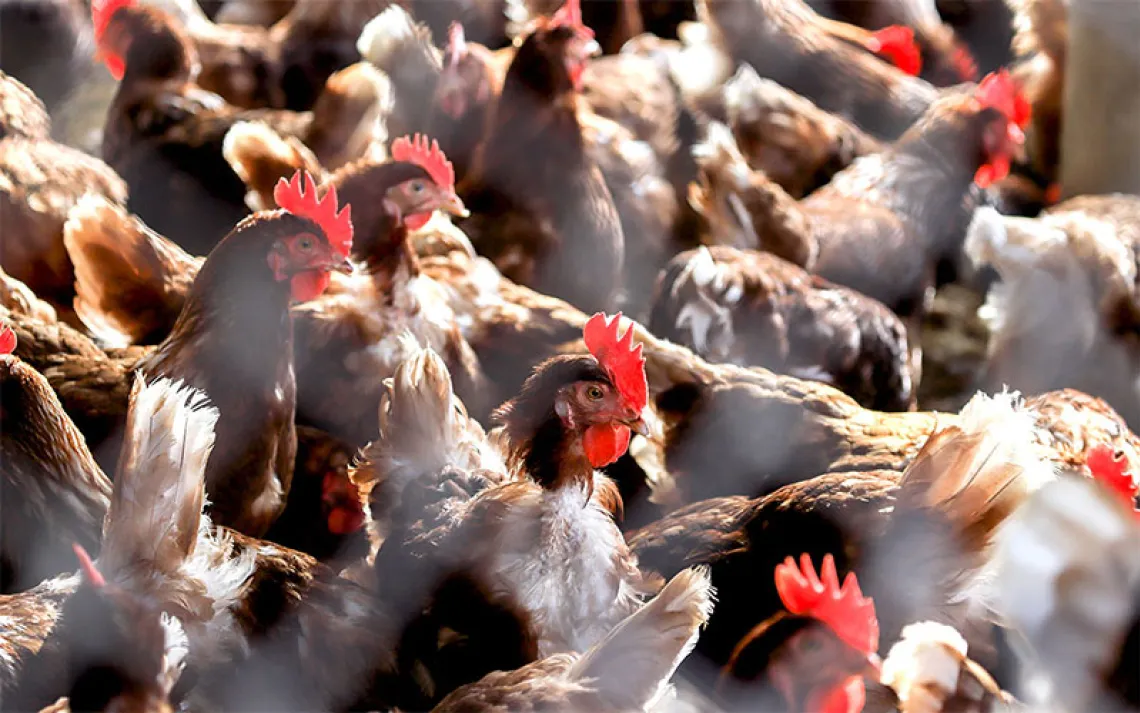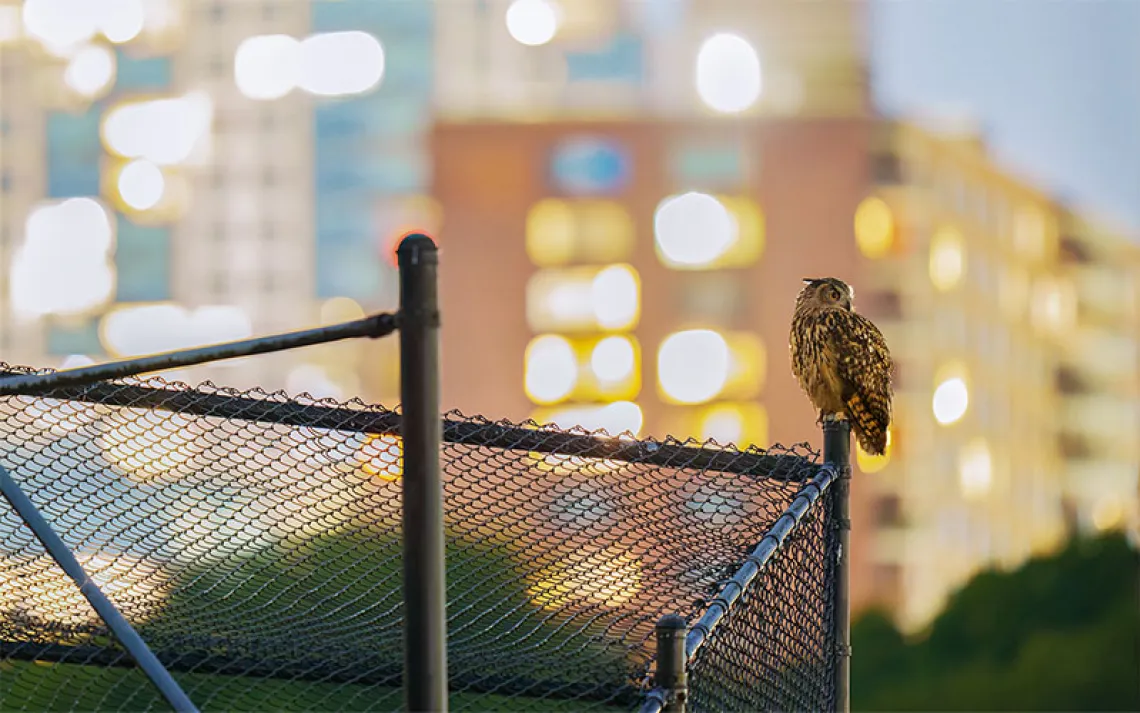Everything Your Kid Needs to Fly
Family-friendly birding apps, books, gear, and more
Warming breezes were just starting to beckon winter-weary families out when the coronavirus pandemic constricted the available outdoors to what could be seen through the window or paced a few feet beyond the front door. On the plus side, shelter-in-place orders coincided with the beginning of the spring bird migration, when billions of feathered animals fly hundreds or thousands of miles by day (shorebirds) and by night (songbirds) to their northerly summer nesting sites.
Migration can be witnessed from almost anywhere—likely at least one reason that parents, cooped up at home with suddenly school-less kids, turned to the activity in droves. Both the National Audubon Society and Cornell Lab of Ornithology reported increases in birding app downloads as well as upticks in traffic to bird cams, citizen-science species-reporting sites, and web pages of, in some cases, more than 100 percent over last year’s numbers. “When it became clear that families were going to need resources to help them through a period of weeks or months,” says Audubon’s chief network specialist, David Ringer, both organizations quickly developed new kid-friendly birding programming. And much of it was an instant hit.
“People are excited for ways to engage the children in their lives in outdoor activities,” says Ringer. Birding, which during migration season provides an influx of colorful, engaging animals to discover every day, “offers a mystery of change and discovery that a lot of people get hooked on.”
Ready to give birding a try? We’ve compiled some family-friendly resources to get you and your kids off and flying.
E-Sources
Audubon for Kids: This colorful 10-part course leads kids through a different lesson each week—about owls, raptors, shorebirds, and the kinds of plants that different birds eat. Chock-full of short videos, quizzes and puzzles, DIYs, and interactive games—plus tips on drawing birds from ornithologist and birding guide author David Sibley—the program provides plenty of options for engaging with our avian friends both online and out in the wild. Available in English and Spanish.
Cornell’s Science & Nature Activities for Cooped Up Kids & Bird Academy Play Lab: The activities on Cornell’s education site are geared directly toward parents looking to guide their K-12 kids through bird-related learning adventures, offering mostly low-fi, hands-on activities centered around themes like migration and courtship—although some require an internet connection to access instructional slideshows. Also on offer here: indoor and outdoor family birding quests that get young and old identifying birds by look, sound, and habitat. Meanwhile, Play Lab offers games for kids of all ages that teach them about birdsong, anatomy, and the evolution of flight.
Native Plants Database: When you’re all ready to take birding to the next level, this database lets the fam search out plantings native to your area that will attract local birds. Then you can hustle everyone out to the yard, the patio, or whatever strip of potential greenspace you’ve got to engage in another one of the pandemic’s most popular homebound pursuits: gardening.
eBird: Developed in partnership between Cornell and Audubon, this nifty site allows citizen scientists of all ages to make checklists of the birds they’ve identified on any given excursion or window-gaze. This helps actual scientists understand migration patterns and species density and connects a whole wide world of bird enthusiasts to one another.
Merlin ID: Need help figuring out who that is in the backyard feeder? Snap a photo and run it through the Merlin app for top hits. No pic? No problem: Simply follow the prompts about color, size, and location for suggestions. Regional “packs” allow you to tailor results to your city or town.
Bird Cams
On rainy days or quiet evenings, forgo Netflix and log on to any number of bird cams set up at feeders, in nests, and around habitats the world over. You can watch barn owls in Israel, vultures in Bulgaria, and the rebounding condors of California. Audubon and Cornell have their own live feeds, but resources are plentiful; check out this compilation of cams.
Bird Books & Field Guides
No matter your age or interest level, every birder needs an illustrated book to guide them in identifying all that flies around out there. But where middle-school-age kids might enjoy using starter field guides like The Young Birder's Guide to North America by Bill Thompson III (ages nine to 12), and the second edition of the classic Sibley Guide to Birds will appeal to teens and parents alike, younger kids appreciate books that engage them, first of all, in stories.
The Big Book of Birds by Yuval Zommer (ages six to eight) features tales of a number of star birds, like flamingoes and bald eagles, and also introduces concepts about grouping birds into categories, uses for beaks, and how avians survive city life, with bright, busy illustrations and minimal text.
A Nest Full of Eggs by Priscilla Belz Jenkins and Lizzy Rockwell (ages four to six) explains the lifecycle of birds—in this case, common but fascinating robins—from tiny egg to adult migrant.
Feathers: Not Just for Flying by Melissa Stewart and Sarah S. Brannen (ages six to nine) explores the highly specialized feathers of 16 different avians, explaining how birds use them to keep warm, stay dry, and act as pillows.
Paddle Perch Climb: Bird Feet Are Neat by Laurie Ellen Angus (ages three to eight) dives into the many-varied behaviors of birds, using their feet as clues to how they climb, run, and wade.
Gear
Binoculars are a must for birding, and a lousy pair—hard to focus, presenting too-narrow views—is sure to lead to frustration. Pricier pairs really do have better optics, but Bespin binoculars, which are sized specifically for very young children, won’t break the bank at $25 (they’re also highly rated starter gear). Nikon’s Trailblazer binocs are waterproof, durable, and compact, making them suitable—and affordable, at around $79—for somewhat older, if sometimes still clumsy, kids. And there are myriad options for teens and adults, including fog- and waterproof Celestron Nature DX, widely considered a top pick for birders in the under-$200 range.
Some birders like to mark their species finds right in their field guide; others prefer a dedicated birding journal for the task. This Bird Watching Journal is geared toward elementary-age kids, providing them with template pages where they can record species specs. Meanwhile, Sibley’s Birder’s Life List and Field Diary features checklists of all known North American birds and entry pages that allow for more detailed observations to appeal to a more mature birding set.
A cargo vest, with myriad pockets and loops and clasps, is just what a little tyke needs for hauling around binocs, field guides, and pencils (and, of course, for feeling like a professional ornithologist).
Games
Play is the least painful way to learn about almost anything, and Match a Pair of Birds memory game is the perfect way for children ages six and up to begin to recognize the differently colored and patterned males and females of 25 bird species.
The Little Book of Backyard Bird Songs by Andrea Pinnington and Caz Buckingham (ages five to nine) features illustrated song buttons that, when pressed, release the distinctive calls of birds like wrens, blackbirds, doves, and sparrows.
Wingspan is a next-level board game for teens and grown-ups in which players build up wildlife preserves full of wetland, forest, and grassland birds—170 different species of which are featured on scientifically accurate and beautifully illustrated cards.
 The Magazine of The Sierra Club
The Magazine of The Sierra Club




